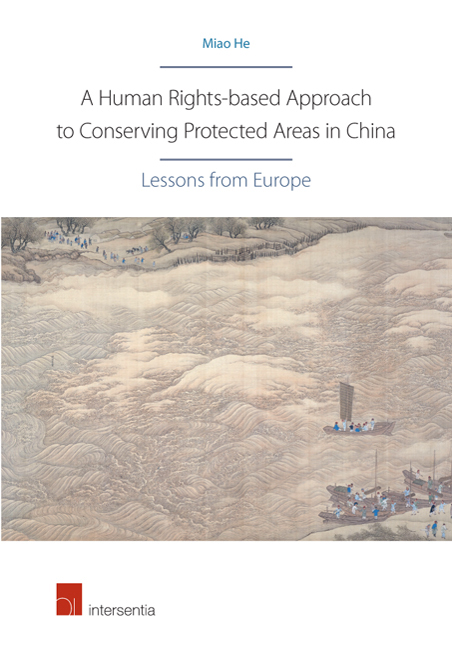Book contents
- Frontmatter
- Contents
- List of Abbreviations
- PART I INTRODUCTION AND BACKGROUND
- Chapter 1 Introduction
- Chapter 2 Theory of a Human Rights-Based Approach to Conservation
- PART II ANALYSIS OF THE RELATIONSHIP BETWEEN HUMAN RIGHTS AND PROTECTED AREAS CONSERVATION IN CHINA AND IN EUROPE
- PART III IMPLEMENTATION AND GENERAL CONCLUSION
- References
Chapter 2 - Theory of a Human Rights-Based Approach to Conservation
from PART I - INTRODUCTION AND BACKGROUND
Published online by Cambridge University Press: 22 September 2018
- Frontmatter
- Contents
- List of Abbreviations
- PART I INTRODUCTION AND BACKGROUND
- Chapter 1 Introduction
- Chapter 2 Theory of a Human Rights-Based Approach to Conservation
- PART II ANALYSIS OF THE RELATIONSHIP BETWEEN HUMAN RIGHTS AND PROTECTED AREAS CONSERVATION IN CHINA AND IN EUROPE
- PART III IMPLEMENTATION AND GENERAL CONCLUSION
- References
Summary
A HUMAN RIGHTS-BASED APPROACH AND ITS KEY FEATURES
A new “paradigm” of nature conservation with respect for human rights has recently emerged. The UN Development Program issued a “Statement of Common Understanding” in May 2003, explaining that “In a human rights based approach, human rights determine the relationship between individuals and groups with valid claims (rights-holders) and State and non-State actors with correlative obligations (duty-bearers).” The purpose behind the Statement of Common Understanding was to provide a consistent and coherent definition on the human rights-based approach across all UN agencies, funds and programmes. The human rights-based approach works towards strengthening the capacities of rights-holders to make their claims, and of duty-bearers to meet their obligations. The UN Common Understanding of a human rights based approach is based on a number of principles, of which empowerment is an important one. The Common Understanding serves to guide processes and outcomes with respect to human rights mainstreaming and in doing so provides practitioners with operational guidance in applying a human rights-based approach in their work. An increasing number of UN agencies are not only integrating human rights into their internal policies, but also actively advocating for human rights through their mandated work. Human rights are fulfilled when the persons involved enjoy secure access to the freedom or resource (adequate health protection, freedom of speech) covered by the right. A human rights based approach calls for the recognition of the intrinsic link between human rights and development goals, including environmental sustainability. While charity and needs-based approaches focus on the manifestation and immediate causes of problems, a human rights-based approach addresses such causes in a more structural manner.
The term “human rights-based approach” is used by various actors and organisations in different ways. By drawing on the human rights framework – a relatively well developed and widely recognised set of negotiated standards – a human rights-based approach offers a strong standard with which to understand and assess the social implications of conservation practice. A human rights-based approach is generally understood that all rights, including economic, social and cultural rights, are considered indivisible, interrelated and interdependent. However, the human rights-based approach does not necessarily have to be restricted to rights currently recognised in human rights law, but can have a normative component.
- Type
- Chapter
- Information
- A Human Rights-based Approach to Conserving Protected Areas in ChinaLessons from Europe, pp. 53 - 88Publisher: IntersentiaPrint publication year: 2016



